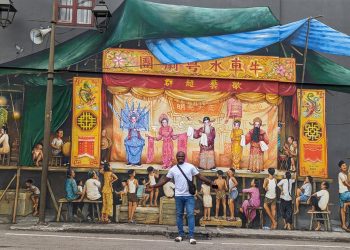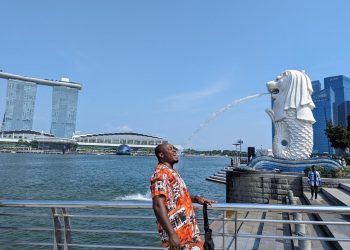Nestled in the heart of Singapore, Haw Par Villa, also affectionately known as Tiger Balm Gardens, stands as a testament to the rich tapestry of Chinese folklore, mythology, and religious beliefs.
Beyond its vivid and sometimes macabre depictions, this oriental-style theme park is steeped in history, making it a culturally significant landmark.
Aw Boon Haw’s Vision
The story of Haw Par Villa begins in 1937 when it was envisioned and built by Aw Boon Haw, a visionary entrepreneur and the mind behind the renowned Tiger Balm brand.
His motivation was rooted in a profound passion for Chinese culture and mythology, and the villa was a manifestation of his desire to share these stories with the world.
The Ten Courts of Hell
Perhaps the most iconic attraction within the villa is the Ten Courts of Hell.
This vivid representation of the afterlife in Chinese mythology and Buddhism serves as a powerful and unique cultural showcase.
The gruesome depictions underscore the intricate beliefs woven into the fabric of Chinese tradition.
A Repository of Folklore
Haw Par Villa stands as a living museum, preserving and showcasing Chinese folklore, storied myths, and religious beliefs.
Each statue and tableau tells a story, offering visitors an immersive experience into the cultural heritage of Asia. It’s a repository of traditions that might otherwise be lost to time.
The Aw Brothers’ Legacy
Originally constructed by Aw Boon Haw for his younger brother Aw Boon Par, the villa holds a special place in the hearts of the Aw family.
Beyond its commercial value, it stands as a testament to the family’s commitment to cultural preservation and education.
Government Acquisition and Restoration
In the late 1980s, the government acquired the garden grounds, ensuring its continued existence as a cultural and historical landmark.
Subsequent restoration works breathed new life into Haw Par Villa, allowing it to welcome guests from around the world and share the captivating stories it holds.
Challenges and Preservation Efforts
Despite its historical significance, there have been concerns about declining visitorship.
Efforts are ongoing to maintain the cultural and historical relevance of Haw Par Villa, ensuring that it remains a vibrant destination for those seeking to delve into the intricacies of Asian culture.
Still have some travel questions? Ask in our Travel WhatsApp Group.








